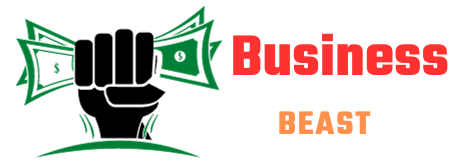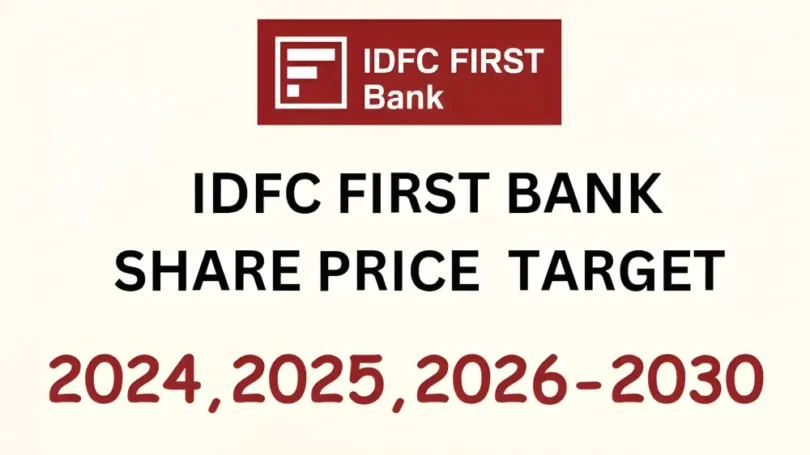Investors are constantly searching for opportunities in the ever-changing financial markets that offer stability and growth. A major participant in the banking industry, IDFC First Bank has drawn notice lately for its actions. We will examine the possible IDFC First Bank share price target in this article.
Infrastructure Development Finance Company (IDFC), a banking division, and Capital First, a non-banking financial institution, merged to form IDFC FIRST Bank, a private sector bank. Consumer banking, credit cards, personal loans, home loans, loans secured by property, consumer durable loans, auto loans, business loans, micro-enterprise loans, wealth management, corporate banking, wholesale banking, and private banking are just a few of the services offered by this bank.
In 2015, IDFC First Bank’s shares were listed on the NSE (NSE: IDFCFIRSTB) and the BSE (BOM: 539437). Its listing indicates that it hasn’t done well. Either constant buying or constant selling occurs. Its history reveals that it is a very erratic stock, capable of falling by as much as 50%, but it usually recovers in a year.
Regarding the current state of affairs, there has been some improvement, with increases of 45% in a year and 135.78% in five years having been observed. India’s economy is expanding steadily and is generally beneficial to all industries. In the future, IDFC FIRST Bank’s share price is expected to rise, but there will be a significant decline in between.
IDFC First Bank Share Price Target 2024
| 2024 | Share Price Target 1 | Share Price Target 2 |
| February | ₹92.63 | ₹100.28 |
| March | ₹88.77 | ₹98.49 |
| April | ₹91.29 | ₹101.07 |
| May | ₹94.05 | ₹100.98 |
| June | ₹94.13 | ₹103.36 |
| July | ₹98.54 | ₹107.24 |
| August | ₹103.84 | ₹112.78 |
| September | ₹105.26 | ₹114.90 |
| October | ₹108.56 | ₹115.23 |
| November | ₹110.31 | ₹117.68 |
| December | ₹110.90 | ₹121.20 |
IDFC First Bank Share Price Target 2025
| 2025 | Share Price Target 1 | Share Price Target 2 |
| January | ₹112.87 | ₹122.08 |
| February | ₹116.43 | ₹125.75 |
| March | ₹111.15 | ₹121.15 |
| April | ₹115.84 | ₹123.38 |
| May | ₹117.47 | ₹125.97 |
| June | ₹119.57 | ₹128.89 |
| July | ₹121.23 | ₹132.63 |
| August | ₹127.23 | ₹138.25 |
| September | ₹131.08 | ₹140.11 |
| October | ₹132.33 | ₹141.69 |
| November | ₹134.86 | ₹144.25 |
| December | ₹135.39 | ₹146.03 |
IDFC First Bank Share Price Target 2026
| 2026 | Share Price Target 1 | Share Price Target 2 |
| January | ₹137.56 | ₹149.43 |
| February | ₹140.09 | ₹151.32 |
| March | ₹136.96 | ₹148.88 |
| April | ₹137.56 | ₹149.74 |
| May | ₹140.89 | ₹152.35 |
| June | ₹142.37 | ₹155.41 |
| July | ₹145.99 | ₹159.24 |
| August | ₹151.88 | ₹163.08 |
| September | ₹154.62 | ₹168.35 |
| October | ₹156.89 | ₹170.42 |
| November | ₹156.28 | ₹170.67 |
| December | ₹160.05 | ₹175.73 |
IDFC First Bank Share Price Target 2027
| 2027 | Share Price Target 1 | Share Price Target 2 |
| January | ₹161.26 | ₹177.96 |
| February | ₹163.73 | ₹179.51 |
| March | ₹160.48 | ₹176.69 |
| April | ₹161.35 | ₹180.92 |
| May | ₹163.50 | ₹181.08 |
| June | ₹165.89 | ₹183.39 |
| July | ₹170.49 | ₹187.77 |
| August | ₹174.65 | ₹194.38 |
| September | ₹176.33 | ₹197.81 |
| October | ₹178.44 | ₹199.16 |
| November | ₹180.09 | ₹203.28 |
| December | ₹181.79 | ₹204.08 |
Current Competitors of IDFC First Bank
- HDFC Bank: HDFC Bank has a strong presence in several markets, including retail banking, corporate banking, treasury, and digital banking. It is the largest private sector bank in India in terms of assets, deposits, and market capitalization. HDFC Bank is a strong rival with its vast network of more than 16,500 ATMs and 5,600 branches.
- ICICI Bank: Concerning deposits and assets, ICICI Bank is the second-biggest private sector bank in India. It provides a wide range of financial and banking services. It serves a wide range of consumer segments, including retail, corporate, rural, and foreign, and operates more than 5,300 branches and 15,000 ATMs throughout India.
- Axis Bank: Axis Bank offers a broad range of banking solutions to retail, corporate, and institutional clients. It is the third-largest private sector bank in the nation based on assets and deposits. There are 12,000 ATMs and more than 4,800 branches in its network.
- Kotak Mahindra Bank: Among the private sector banks in India, Kotak Mahindra Bank is ranked fourth in terms of market capitalization. It provides a range of financial services, such as investment banking, asset management, insurance, and broking. With more than 1,600 branches and 2,500 ATMs, the bank is well-represented.
Growth Opportunities for IDFC First Bank
- Retail Banking: As of June 2023, retail banking accounts for roughly 65% of IDFC First Bank’s loan portfolio, making it a primary focus. Personal loans, home loans, auto loans, credit cards, mutual funds, insurance, savings and fixed deposit accounts, insurance, and digital banking services are just a few of the bank’s many retail offerings. The bank intends to strengthen its position in the retail banking industry by expanding its branch network to 800 by March 2024, in addition to growing its retail loan book at a 25% CAGR over the next five years.
- Rural Banking: With its business correspondent outlets, the bank serves more than 10 million customers, making it a significant player in rural and semi-urban areas. It offers a variety of products including microloans, loans for agribusiness, loans for tractors, gold loans, savings accounts, remittances, and insurance that are specifically designed for rural clients. To increase the size of its clientele in these areas, IDFC First Bank plans to leverage its rural reach to cross-sell additional goods and services.
- Corporate Banking: Infrastructure finance, working capital finance, trade finance, project finance, structured finance, treasury services, and investment banking are just a few of the corporate banking offerings that the bank is proud to offer. Over the next five years, the bank, which serves industries like manufacturing, power, renewable energy, telecom, roads, ports, and airports, aims to grow its corporate loan book at a compound annual growth rate of 15%. Furthermore, IDFC First Bank intends to boost its fee income by providing syndication, arrangement, and advisory services.
Risks in the Future for IDFC First Bank
- Competition: The bank competes with both well-established and up-and-coming players in the banking sector in its highly competitive operating environment. These rivals frequently possess greater resources, stronger brand awareness, and higher levels of client loyalty. In the highly competitive retail and digital banking sectors, IDFC First Bank may face pressure on its margins, market share, and customer acquisition.
- Regulatory Environment: IDFC First Bank is subject to several rules established by the Reserve Bank of India (RBI) and other regulatory bodies as a member of the highly regulated banking industry. The bank is vulnerable to actions or changes in regulations that could affect its business practices, tactics, or financial stability. The RBI’s recent imposition of a penalty of Rs. 2 crore on the bank for non-compliance serves as an example of the ongoing regulatory challenges.
- Macroeconomic Factors: Macroeconomic factors including GDP growth, inflation, interest rates, exchange rates, fiscal and monetary policies, and consumer sentiment all have a significant impact on the bank’s performance. The quality of the bank’s asset portfolio, the cost of funds, and consumer demand for banking products and services can all be negatively impacted by any downturn or instability in the national or international economy. The bank’s potential for growth and financial stability may be seriously jeopardized by these factors.
FAQ’s of IDFC First Bank Share Price Target
Q1. After five years, what is the target share price for IDFC First Bank?
In the next five years, the stock price of IDFC Bank might increase to ₹234.63.
Q2. After ten years, what is the target share price for IDFC First Bank?
In the next ten years, the stock price of IDFC Bank might increase to ₹380.67.
Q3. What is the target share price for IDFC First Bank in 2024?
The share price of IDFC Bank is anticipated to reach ₹121.20 by the close of 2024.








Leave a Comment